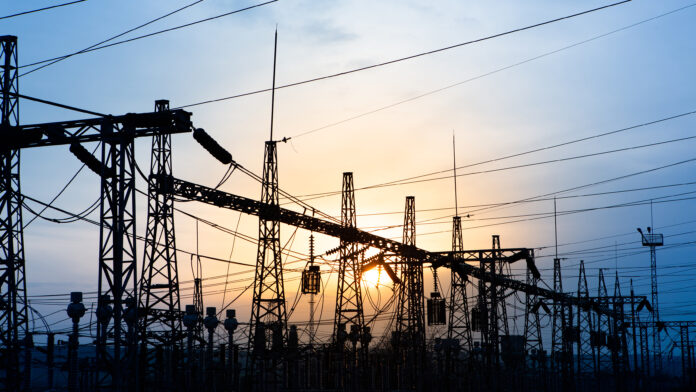Can Microgrids Power the Next Industrial Revolution?
As the world grapples with energy insecurity, climate change and the rising demand for electricity, the limitations of centralized energy systems are becoming increasingly apparent. Traditional grids, designed for a one-way flow of power from large-scale power plants to end users, are now struggling to cope with the complexity of modern energy needs. In response, a quiet revolution is emerging in the form of decentralized energy grids and microgrid systems. These smaller, localized grids are being touted as the backbone of a cleaner, more resilient and more democratic energy future. The question remains whether they can live up to this promise and truly power the next industrial transformation.
Microgrids are self-contained energy systems that can operate independently or in coordination with the main grid. Typically powered by a combination of solar panels, wind turbines, battery storage and sometimes backup generators, microgrids can supply electricity to communities, campuses, hospitals, factories or remote areas. Their greatest strength lies in resilience. During natural disasters or grid failures, a well-designed microgrid can continue to function, keeping essential services online while the rest of the grid goes dark.
In the developing world, microgrids are rapidly gaining attention as a solution to persistent energy poverty. In rural regions of Africa, South Asia and Latin America, millions still lack access to reliable electricity. Rather than waiting for national grids to expand, many communities are turning to solar-powered microgrids that offer a faster and often more affordable alternative. These systems not only light homes and charge phones but also enable small businesses, schools and clinics to function with minimal disruption.
For industrialized nations, the appeal of microgrids is increasingly strategic. As
manufacturing systems become more digitized and energy-intensive, power reliability becomes critical. Downtime from blackouts or brownouts can cripple high-value production lines and sensitive equipment. By deploying microgrids on-site, industrial facilities can ensure stable electricity and reduce their dependence on national grids that may be vulnerable to cyberattacks, extreme weather or political disruption.
The rise of distributed energy resources is also reshaping the economics of energy. Solar panels, battery storage, electric vehicles and smart appliances allow consumers to generate, store and manage their own electricity. When integrated into a microgrid, these assets can form a dynamic local energy ecosystem. Excess power can be shared with neighbors, sold back to the grid or stored for later use. This democratizes energy ownership and can foster
local energy markets where communities manage their own energy production and consumption.
Yet microgrids are not a silver bullet. They face considerable technical, regulatory and financial hurdles. Standardization is still evolving, and many utilities remain hesitant to integrate decentralized systems into their operations. The cost of batteries and advanced control systems remains high, although falling rapidly. Moreover, designing a microgrid that can seamlessly transition between islanded and grid-connected modes requires sophisticated
software and engineering expertise.
There is also the issue of governance. Who owns and operates a community microgrid? How are profits, maintenance costs and responsibilities shared? Without clear legal and institutional frameworks, microgrids can become a source of conflict rather than empowerment. Policymakers must address these questions if decentralized energy is to become a truly inclusive force.
Environmental benefits also depend on the source of power. A diesel-powered microgrid may enhance resilience but does little to reduce emissions. The true potential lies in renewable-based microgrids, where clean energy, local autonomy and climate goals align. In this regard, combining solar or wind generation with next-generation battery systems and AI-driven grid management tools offers a powerful vision of the future.
Countries like Germany, the United States and Japan are already piloting large-scale microgrid initiatives tied to urban neighborhoods, universities and military bases. In Australia, remote mining operations are running on solar-diesel hybrid microgrids. In India and Bangladesh, rural microgrids are transforming village life with minimal state intervention. Even in Sri Lanka, interest in decentralized grids is growing as part of energy diversification strategies and climate adaptation plans.
The broader implications of decentralized energy go beyond electricity. Energy independence can become a foundation for economic independence. In an age where digital infrastructure, food security, education and healthcare all rely on stable power, local control over energy becomes a driver of development. Microgrids also encourage innovation, as startups and communities co-create energy solutions tailored to their own needs.
The next industrial revolution may not be powered by a single massive plant or national utility, but by millions of interconnected, intelligent and locally managed microgrids. This transformation requires not only new technologies but new mindsets. Centralized command-and-control thinking must give way to collaborative, adaptive models of energy governance.,In doing so, countries can build not only a more resilient energy system but also a more resilient society.
The energy transition is no longer a choice between central and local, old and new. It is about integration. Microgrids, when scaled wisely and inclusively, could be the key to unlocking a more flexible, secure and sustainable energy future.




